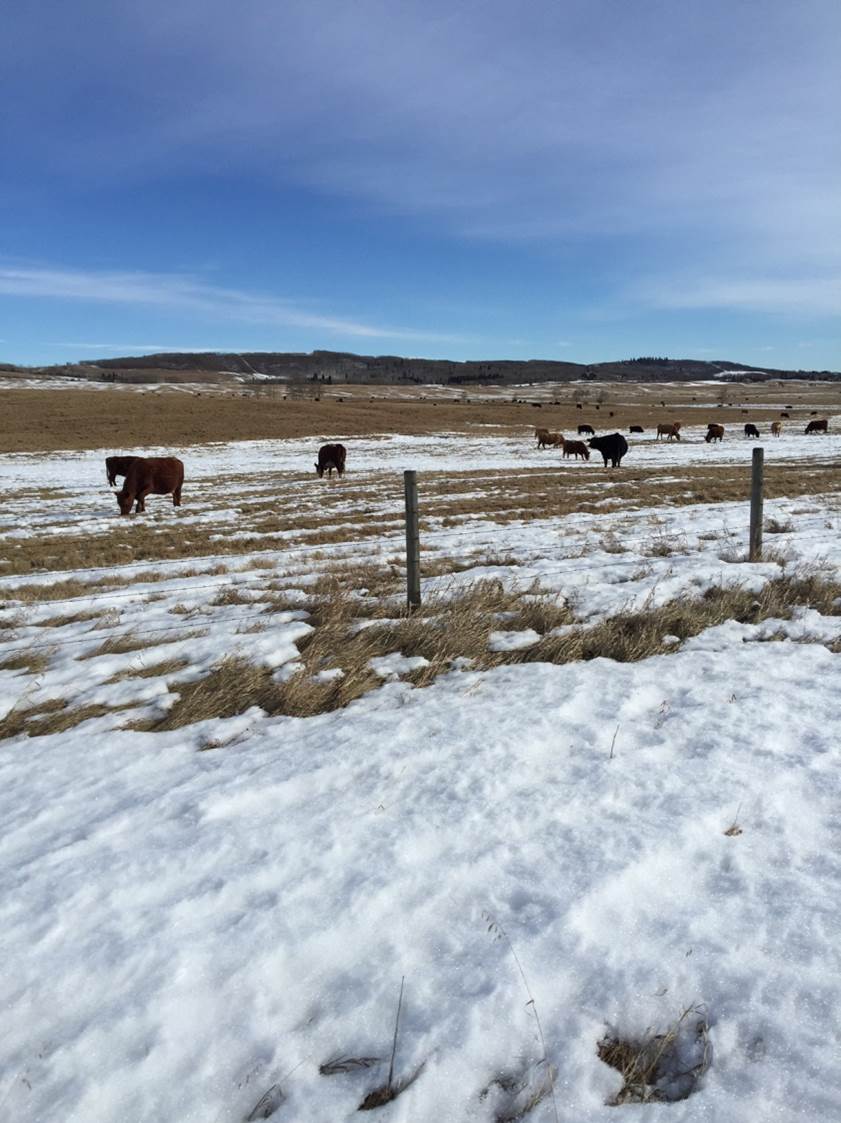Nexus case study: water for food production in 2030
Prepared Winter 2016
Local and global demand for food is expected to increase, putting greater demands on water resources. What could this look like for water in the Bow River Basin in 2030?
Populations continue to grow world-wide and with this the demand for food grows. Recent estimates suggest global food production will need to increase by 70 to 100 percent to meet increased demand[1]. Canada is expected to play a key role in meeting future demand for food and is one of only five countries experts believe is capable of increasing food production to meet global food demand.
What could an increase in food demand mean for agricultural activity and associated water use in the Bow River basin?
Of Alberta’s 13 irrigation districts, three receive all of their water from the Bow River and have land in the Bow River Basin. These irrigation districts are the Bow River Irrigation District (BRID), Eastern Irrigation District (EID), and Western Irrigation District (WID). Each of these has roughly half of their irrigation district in the basin. Consequently, the three irrigation districts cover about 324,000 acres of irrigated land in the Bow River basin.
As 30 percent of crops throughout Alberta are cereal crops (including wheat, barley, and oats) this type of agriculture was selected to illustrate water use for food production. Although livestock is raised in the basin, this type of farming does not use as much water as crop production in the basin.

“Alberta farming” by Kristy Dixon is licenced under CC BY 2.0
Recent data published in the Canadian Water Resources Journal[2] indicates cereal crops require (on average) a net irrigation of 244 mm of water. Therefore, if we conceptualize that cereal crops are the primary crop grown on the Bow River Basin’s irrigated land, water demand would be about 320 million m3 or 260,000 acre-feet. This use of water and irrigated land could produce approximately 600,000 tonnes of cereal crops, which could provide enough food to meet the daily caloric intake requirements of around 1.3 million people!
While this example assumes cereal crop production will be front and center, in reality there are a range of crops and specialty crops grown in the Bow River Basin requiring different amounts of water. Also, cereal crops are often grown for crop rotation purposes, meaning higher valued crops could dominate land and water use in the irrigation districts.
Recent data published in the Alberta Irrigation Information Booklet[3] indicates roughly 214,000 acres of the BRID, EID, and WID were used to produce cereal crops in 2014, half of which (107,000 acres) occurred in the Bow River Basin. With this in mind, if current practices regarding cereal crop production on irrigated land continued, the net irrigation water required to grow cereal crops could be as low as 106 million m3 or 86,000 acre-feet by 2030.
It is envisioned irrigation districts in the Bow River Basin will operate within their licensed water allocation and meet increasing demands for food production, while limiting increases in water use through the application of new, more efficient irrigation technologies, among other advances.
Click here (1.05 MB) to read Behind the Scenes: Alberta Water Nexus Project Pilot’s Assumptions and Constraints.
Sources
[1] Molden, D. (ed). (2009). Water for Food Water for Life. A Comprehensive Assessment of Water Management in Agriculture. IWMI and Earthscan, London. 2007. Also UNESCO. Water in a Changing World: The United Nations Water Development Report 3. Earthscan, London.
[2] Bennett, D. R., Harms, T. E., & Entz, T. (2014). Net irrigation water requirements for major irrigated crops with variation in evaporative demand and precipitation in southern Alberta. Canadian Water Resources Journal/Revue canadienne des ressources hydriques, 39(1), 63-72.
[3] “Alberta Irrigation Information 2014.” Alberta Agriculture and Forestry. Accessed February 2014. http://www1.agric.gov.ab.ca/$Department/deptdocs.nsf/all/irr7401/$FILE/altairriginfo2014.pdf
